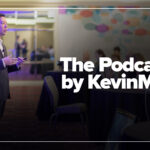The American public has lost its faith in the traditional U.S. health care system. Ultimate Fighting Championship (UFC) President Dana White’s statement is representative: “Do not talk to a doctor about your general health.”
This is not a fringe sentiment.
A 2022 survey of 4,208 adults in the U.S. revealed that only 54 percent of respondents placed “a great deal” of trust in doctors as sources of information.
I have patients who tell me they wouldn’t go to a doctor for advice on their health. (After I remind them that I am a doctor, they give me a pass.)
What does health mean in 2025? Increasingly, health represents a personalized goal. This trend holds promise. Americans are rejecting the notion of health as the absence of disease. Our traditional health care system functions as a disease-care system, through no fault of the individuals doing excellent work within it. The education, economics, diagnostics, and delivery of care pivot on the identification of specific pathology and application of the corresponding treatment. Proactive prevention takes a backseat to reactive treatment. The result is a system with astounding ability to treat critically ill and traumatized patients. Sadly, we have not moved the needle on the prevention of chronic diseases. Forty percent of adults meet criteria for obesity. Those without chronic disease (only about half of the U.S. adult population) are turning away from traditional health care in pursuing their personal health. Rightly so.
They are turning to those they believe exemplify the life that will make them feel how they want to feel. What do our patients live for? It’s a component that’s missing from all but the best physician-patient relationships. Beyond mere awareness of our patients’ occupation, we must question how they will perform at that job, or their sport, or their hobby, or their ability to fulfill a family role in a meaningful way. Our patients are looking to high performers to help them conceptualize and pursue optimal health.
As physicians, we have erred in dismissing the influencers of social media simply based on their position outside the medical establishment. Yet we do our patients a disservice if we don’t contextualize what they see on social media.
Longevity and performance can be complementary. But traditional medicine falters in the gap between rehabilitation and performance. After anterior cruciate ligament (ACL) injury, for example, a motivated patient can hope to return to sport nine months after surgery. However, only 70 percent of patients return to sport. And less than half self-rate their performance as equal to their pre-injury level.
Pursuit of elite performance currently resides outside of our health care system. I believe it should not. The ways we measure elite athletic performance hold value for the non-elite. We need to measure performance on a continuous spectrum and on a continual basis. When beset with an injury or illness, we have a great system to react and mobilize treatment. The remainder of the time, we need to proactively pursue performance.
We learn from edge cases. Iñigo San Millan at the University of Colorado studies elite cyclists and those with metabolic syndrome. The title of one of his 2018 papers on the subject charitably refers to those with metabolic syndrome as “Less-Fit Individuals.” This juxtaposition of elite endurance athletes and couch potatoes at first seems a non sequitur. It is not. San Millan takes lessons from how the muscle cells of elite athletes handle glucose, and how their training enables the efficiencies they demonstrate. Elite athletes can burn fat at higher exercise intensities, whereas the less-fit individuals transition earlier to burning carbohydrate. Fat burning is the most efficient way for a cell to produce energy. The ability to do so is a reflection of the health of the cell’s powerhouses: the mitochondria.
Exercise is not just for training. It is a critical component of the prevention and treatment of chronic disease. Fitness is the best predictor of longevity. Non-elites can take cues on how to assess and improve fitness from elites.
Americans are swimming in a deluge of data, with the number of data points only increasing. Any number of wearable technologies can now give you anything from sleep metrics to heart rate variability to gait stability. Online sources of advice and information abound.
The average American desires to know more about their health status. This is a good thing. With our traditional care system set up to be reactive, a proactive approach requires the patient to be the captain of their ship, the quarterback of their care. They don’t need to know everything about human physiology and disease. I don’t need to know how to repair my car’s engine, but I do need to know how to safely operate it and responsibly maintain it. Patient ownership of health will be tech-enabled in many ways. But data and even knowledge will not drive increased ownership and agency. The desire for directorship coupled with a sense of personal responsibility will be the difference in the sea change of how we conceptualize health. The patient will be the chief executive officer of the corporation of their body.
Where does the physician fit in? Are we the chief operating officers? The highly skilled wage laborers? In any case, we need to fulfill a role from sport: coach. We can provide support, accountability and specialized knowledge. We can provide context and perspective on the strategies and tactics available for the pursuit of health. We can take our patients’ goals as our mutual aim, but we can’t play the game for them. Filling a coaching role would start to rebuild what our profession has in large part lost: the trust of our patients.
If we can use that trust to build agency and resilience in our patients, we can support their pursuit of performance. We can’t all be elite performers. But we can all pursue peak performance. And the time for performance to merge with medicine is now.
Michael Day is an orthopedic surgeon.





















![Catching type 1 diabetes before it becomes life-threatening [PODCAST]](https://kevinmd.com/wp-content/uploads/Design-2-190x100.jpg)
